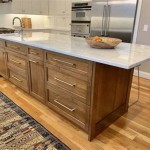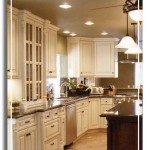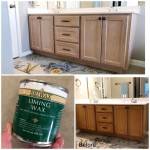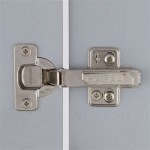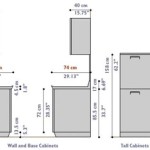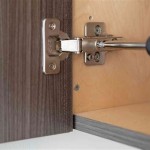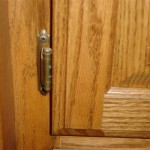Contemporary Kitchen Design: The Enduring Appeal of White Cabinets
Contemporary kitchen design is characterized by clean lines, minimalist aesthetics, and a focus on functionality. It often incorporates natural light, open spaces, and a blend of modern materials. Within this design philosophy, white cabinets have maintained a consistent presence, transcending fleeting trends and anchoring themselves as a timeless and versatile choice for homeowners.
The enduring appeal of white cabinets stems from their inherent ability to adapt to various design styles and color palettes. They act as a neutral canvas, allowing homeowners to personalize their kitchens with vibrant accessories, bold backsplashes, and statement countertops. Furthermore, white cabinets possess practical advantages, contributing to a brighter and more spacious feel, particularly in smaller kitchen environments.
The Versatility of White: Adapting to Diverse Styles
White, in its essence, is a spectrum of shades, ranging from bright, stark whites to warmer, creamier tones. This variation in hue allows white cabinets to seamlessly integrate into a broad range of kitchen styles. In a minimalist contemporary kitchen, a gloss white cabinet with sleek, handleless doors can enhance the clean, uncluttered aesthetic. Paired with stainless steel appliances and a concrete countertop, the result is a sophisticated and modern space.
Alternatively, in a transitional kitchen, characterized by a blend of traditional and contemporary elements, a slightly off-white cabinet with shaker-style doors can create a more inviting and comfortable atmosphere. Integrating natural materials like wood countertops and woven baskets introduces warmth and texture, preventing the space from feeling sterile.
Even in more traditionally-inspired kitchens, white cabinets can play a crucial role. Choosing a warmer white with subtle undertones, combined with intricate detailing on the cabinet doors, can complement classic architectural features and create a timeless and elegant space. Accenting with antique brass hardware and a marble backsplash further enhances the traditional feel.
The versatility of white extends beyond style adaptation. It also serves as a powerful tool for creating visual balance. In kitchens with dark flooring or bold-colored walls, white cabinets act as a counterpoint, preventing the space from feeling overwhelming or cramped. Conversely, in predominantly white kitchens, incorporating different textures and sheens on the cabinets can add depth and visual interest, preventing the space from appearing flat or monotonous.
Enhancing Space and Light: The Practical Advantages
One of the most significant advantages of white cabinets is their ability to maximize both natural and artificial light within a kitchen. White surfaces reflect light, making the space feel brighter and more open. This is particularly beneficial in kitchens that lack ample natural light or have limited square footage.
Darker cabinets, on the other hand, tend to absorb light, potentially making a kitchen feel smaller and more enclosed. By reflecting light, white cabinets create an illusion of spaciousness, making them an ideal choice for apartment kitchens, galley kitchens, or any space where maximizing visual volume is a priority.
This light-reflecting quality also extends to the aesthetics of the entire kitchen. With white cabinets, the colors of the walls, countertops, and accessories are more vibrant and noticeable. The white backdrop allows these elements to stand out, creating a more dynamic and visually engaging space. It also makes it easier to incorporate pops of color without overwhelming the overall design.
Furthermore, white cabinets can contribute to a cleaner and more hygienic environment. Dirt and grime are more easily visible on white surfaces, prompting more frequent cleaning and maintenance. This is especially important in a kitchen, where food preparation and potential spills are common occurrences.
Material Considerations and Maintenance Strategies for White Cabinets
While white cabinets offer numerous aesthetic and practical advantages, it is crucial to consider the different materials available and their respective maintenance requirements. Common materials for white cabinets include painted wood, laminate, thermofoil, and melamine. Each material offers a different balance of cost, durability, and aesthetic appeal.
Painted wood cabinets offer a classic and timeless look. They can be custom-painted to match any desired shade of white and can be repainted in the future if the homeowner wishes to update the kitchen's color scheme. However, painted wood is generally more expensive than other materials and can be susceptible to chipping and scratching.
Laminate cabinets consist of a decorative layer of laminate adhered to a substrate, such as particleboard or MDF. Laminate is a durable and affordable option that is resistant to scratches, stains, and moisture. White laminate cabinets are easy to clean and maintain, making them a practical choice for busy households. However, laminate cabinets may not offer the same level of aesthetic detail as painted wood.
Thermofoil cabinets are made by wrapping a layer of vinyl thermofoil over an MDF core. Thermofoil cabinets are seamless and easy to clean, but they can be susceptible to heat damage. It is important to protect thermofoil cabinets from excessive heat from ovens, dishwashers, and other appliances.
Melamine cabinets consist of a melamine-coated paper applied to a substrate. Melamine is a budget-friendly option that is resistant to scratches and stains. However, melamine cabinets may not be as durable as other materials and can be prone to chipping at the edges.
Regardless of the material chosen, proper maintenance is essential to keep white cabinets looking their best. Regular cleaning with a mild detergent and water is crucial to remove dirt, grease, and stains. Avoid using abrasive cleaners or harsh chemicals, as these can damage the finish. Additionally, it is important to promptly wipe up spills to prevent staining. Using cabinet liners can further protect the interior of the cabinets from spills and scratches.
Consideration should also be given to hardware selection. The hardware chosen for white cabinets can significantly impact the overall aesthetic of the kitchen. Stainless steel hardware complements a modern contemporary design, while brushed nickel or antique brass hardware can add a touch of warmth and sophistication to a transitional or traditional kitchen. Choosing high-quality hardware ensures durability and longevity, preventing the need for frequent replacements.
Lighting also plays a critical role in showcasing white cabinets effectively. Under-cabinet lighting illuminates the countertop and backsplash, highlighting the clean lines of the cabinets and providing task lighting for food preparation. Recessed lighting in the ceiling provides overall ambient lighting, while pendant lights over the island or peninsula add a decorative touch and provide focused illumination for dining or gathering.

35 Beautiful White Kitchen Designs With Pictures Modern Cabinets Interiors

Timeless White Kitchen Designs We Love Residential Interior Design From Dkor Interiors
:strip_icc()/amhadfreemansp-37a772c44ef24079848243674af2e1f5.png?strip=all)
13 Lovely White Kitchen Cabinet Ideas We Ll Always Love

White Kitchen Cabinets Ideas View Our Modern Units Designs At Lakeland Kitchens

65 Modern Kitchen Design Ideas Photos Small White Luxury

Contemporary L Shaped Kitchen Design With Frosty White Cabinets 11x10 Ft Livspace

50 Luxury Modern Kitchen Design Ideas That Will Inspire You

Off White Kitchen Cabinets Perfect Choice For Cozy Kitchens

White Kitchen Cabinets Designs To Re Design Your Glaminati

18 Best White Kitchen Cabinets Design Ideas For
Related Posts

